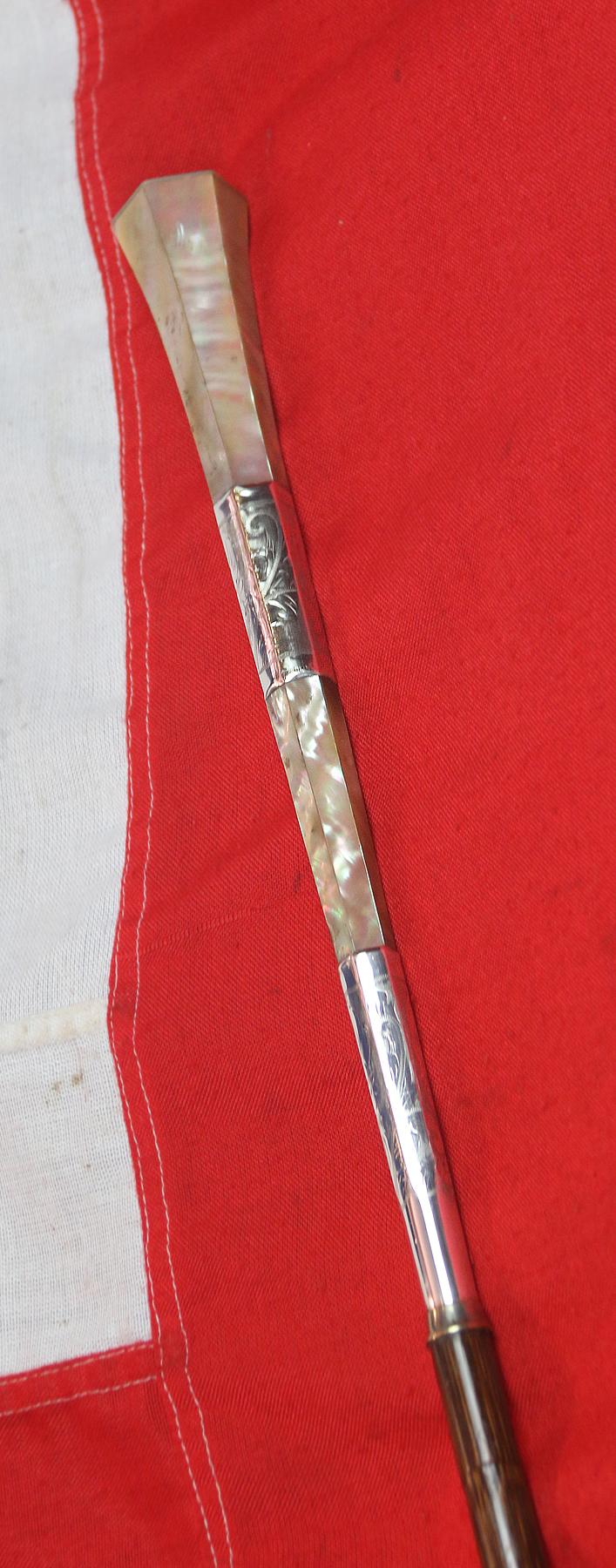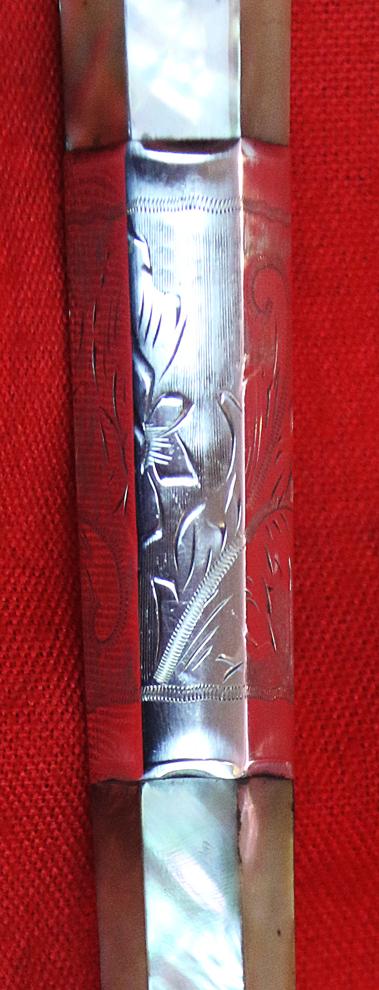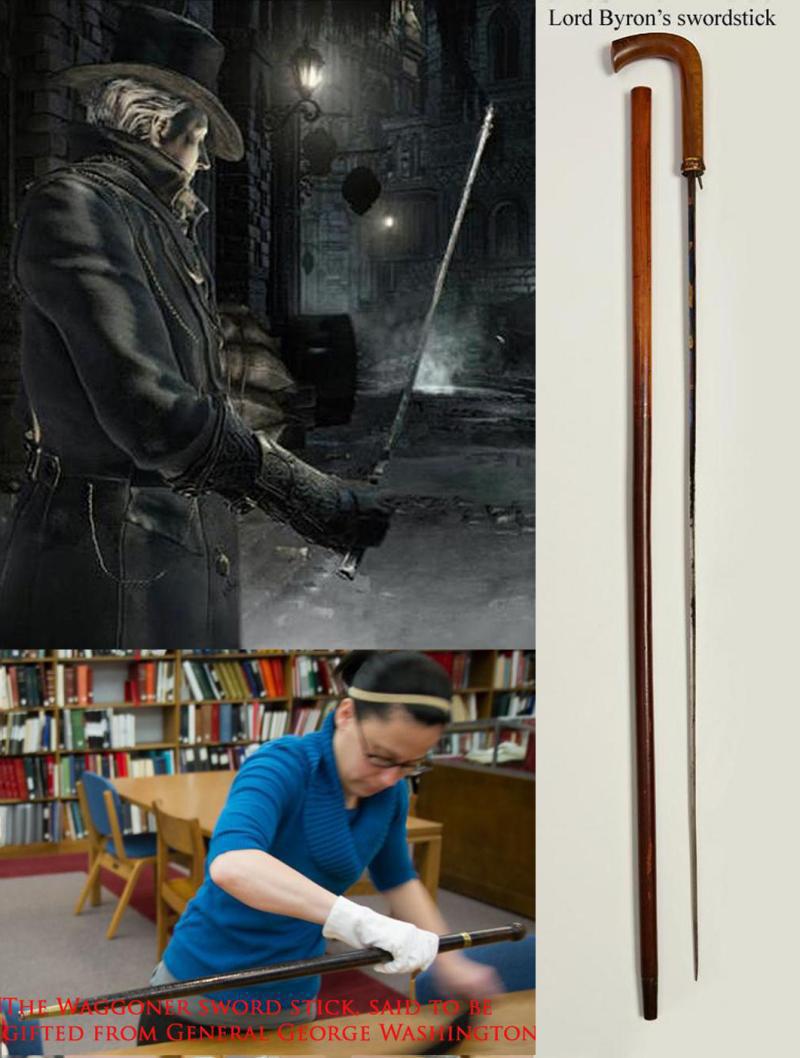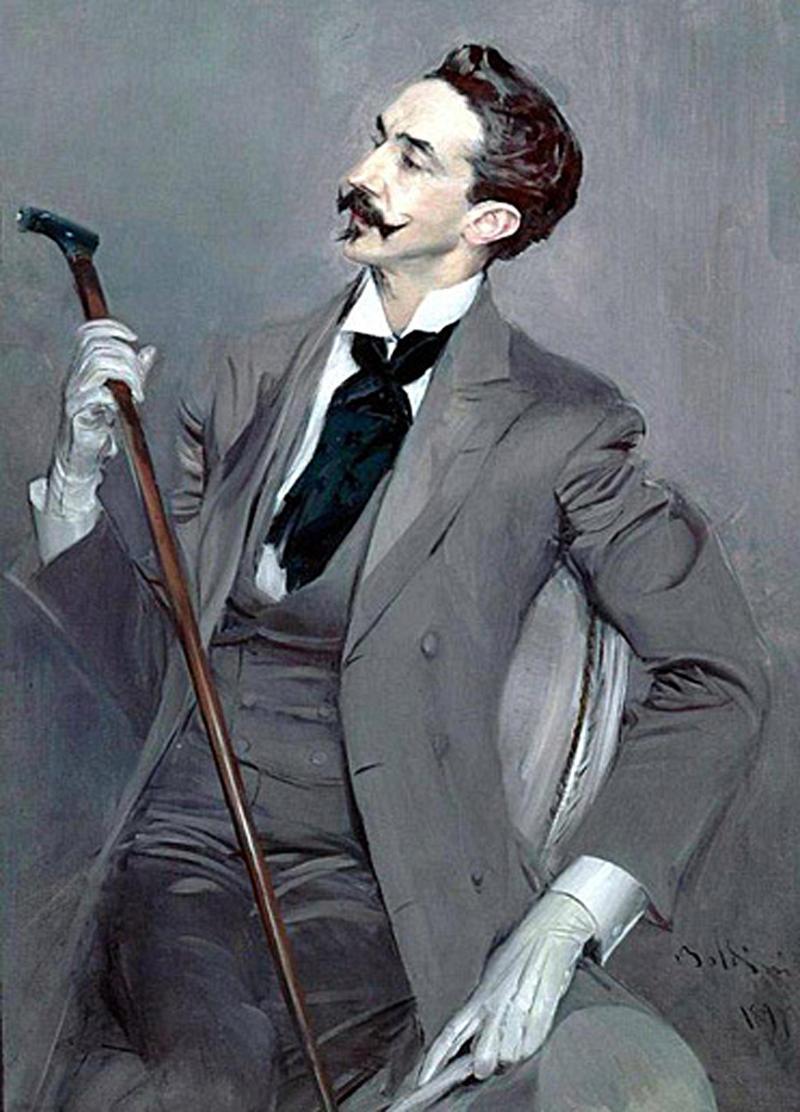A Beautiful & Superb Quality, Antique, Late Victorian, Finely Engraved Silver & Mother O'Pearl Handled Sword-Cane. A Most Elegant & Sophisticated Work of Art In Near Mint Condition.
Long silver and mother o'pearl handle. A long bamboo haft with superb patination and a quatrefoil four sided edged blade. Overall in stunning condition for age, as much a work of art as a former functional walking cane sword.
Lord Byron's was a most exponent of the use and carrying of the gentleman’s sword stick. His was exhibited in King's College London, bearing a mercurial gilt collar bearing his name, coronet and adopted surname Noel. Upon the death of Byron's mother-in-law Judith Noel, the Hon. Lady Milbanke, in 1822, her will required that he change his surname to "Noel" so as to inherit
An interesting 19th century conversation and collector's piece, and one can ponder over of the kind of gentleman who would have sought and required such a piece of personal defence paraphernalia. Although one likes to think that jolly old England had a London full of cheerful cockneys and laddish chimney sweeps, it was also plagued with political intrigue, nefarious characters and caddish swine prowling the endless foggy thoroughfares and dimly lit passageways. The swordstick was a popular fashion accessory for the wealthy during the 18th and 19th centuries. While the weapon's origins are unknown, it is apparent that the cane-sword's popularity peaked when decorative swords were steadily being replaced by canes as a result of the rising popularity of firearms, and the lessening influence of swords and other small arms.
The first sword canes were made for nobility by leading sword cutlers. Sixteenth century sword canes were often bequeathed in wills. Sword canes became more popular as the streets became less safe. Society dictated it mandatory that gentlemen of the 18th and especially 19th centuries would wear a cane when out and about, and it was common for the well-dressed gentleman to own and sport canes in a variety of styles, including a good and sound sword cane. Although Byron was proficient in the use of pistols, his lameness and his need to defend himself in some potentially dangerous situations made a swordstick doubly useful to him. He received lessons in London from the fencing master Henry Angelo and owned a number of swordsticks, some of which were supplied by his boxing instructor Gentleman John Jackson.
On Byron’s sword cane was the name NOEL BYRON, upon the ferrule of his one indicated that it was used after 1822, when Byron added the surname Noel after the death of his mother-in-law.
There are several references to sword sticks in the correspondence of Byron and his circle. Byron wrote to Hobhouse from Switzerland on 23 June 1816 asking him to Bring with you also for me some bottles of Calcined Magnesia a new Sword cane procured by Jackson he alone knows the sort (my last tumbled into this lake ) some of Waite's red tooth-powder & tooth-brushes a Taylor's Pawrsanias Pausanias and I forget the other things. Hobhouse responded on 9 July: Your commissions shall be punctually fulfilled whether as to muniments for the mind or body pistol brushes, cundums, potash Prafsanias Pausanias tooth powder and sword stick.
In the entry for 22 September 1816 in Byron's Alpine Journal he describes how, at the foot of the Jungfrau,
"Storm came on , thunder, lightning, hail, all in perfection and beautiful, I was on horseback the Guide wanted to carry my cane I was going to give it him when I recollected it was a Sword stick and I thought that the lightning might be attracted towards him kept it myself a good deal encumbered with it & my cloak as it was too heavy for a whip and the horse was stupid & stood still every other peal."
In a letter to Maria Gisborne of 6-10 April 1822, Mary Shelley described the "Pisan affray" of 24 March, in which Sergeant-Major Masi was pitch-forked by one of Byron's servants. She recounted how Byron rode to his own house, and got a sword stick from one of his servants.
Sword sticks came in all qualities, and for numerous purposes, from the simplest bamboo sword cane personal defender to stout customs officer’s ‘prod’, to offensive close quarter stiletto dagger canes and even to the other side of the world in the form of Japanese samurai’s shikome-sue, hidden swords.
We show two famous sword sticks in the gallery, one that belonged to Lord Byron, and another in a Presidential Centre Library collection, a historic sword stick is part of the Rutherford B. Hayes Presidential Centre Library collection in Fremont, Ohio from the Waggoner family, the sword-cane was said to have been presented to Mr Waggoner by General George Washington in honour of Waggoner's service in Washington's Life Guard during the American Revolutionary War.
But it was Louis XIII who brought the cane to importance as a royal accessory. The king, as his portraits depict, supposedly always held one in his hands. He also gave them – along with valuable snuffboxes – as gifts of honour. Accordingly, gentlemen who wanted to be fashionable never went without this accessory from that time on. At the time, these were sort of ornate rods without a curved handle that were held in the hand or carried under the arm.
The 19th century and the beginning of the 20th century became the age of the cane. The tremendous popularity then created the desire to be seen with a cane. And so a wealth of unique
pieces with practical and strange handles and a mysterious inner life were created. The painter
Henri de Toulouse-Lautrec, for example, owned a cane containing a bottle that held a pint of absinthe.
In the mid-18th century Saxony's prime minister, Heinrich Graf von Brühl, possessed 300 sticks to go with 300 suits, together with just as many snuffboxes which he weared in turn. King Friedrich II, too, had a huge collection of luxurious walking sticks and snuffboxes. After the Seven-Years War one particular type of sticks with a handle formed like a rope, which was King Friedrich’s constant companion, became so popular, that it was dubbed the "Fritz crutch".
Overall 39 inches long, blade 25.75 inches long, silver & mother o'pearl handle, 12.5 inches long.
Code: 25319
1250.00 GBP








